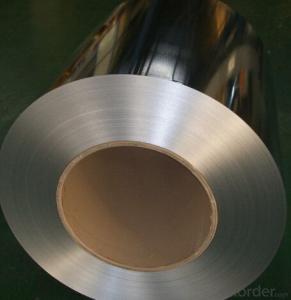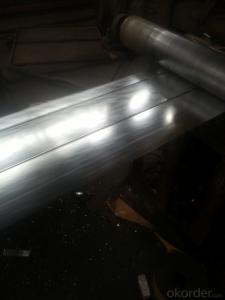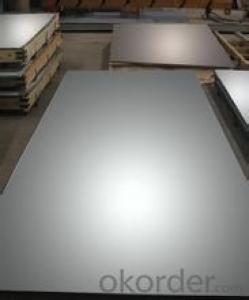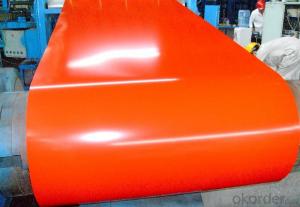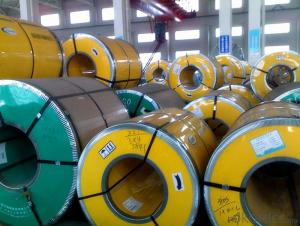Hot-dip Aluzinc Steel Coil From Chinese Shandong
- Loading Port:
- Tianjin
- Payment Terms:
- TT or LC
- Min Order Qty:
- 35 m.t.
- Supply Capability:
- 22222 m.t./month
OKorder Service Pledge
OKorder Financial Service
You Might Also Like
1.Description of the Hot-dip Aluzinc Steel:
Hot-dip aluzinc steel structure is composed of aluminum-zinc alloy, consisting of 55% aluminum, 43% zinc and 2% at 600 ℃ silicon solidification temperature and composition, the entire structure is made of aluminum - iron - silicon - zinc, to form a dense quaternary crystals an alloy.
Hot-dip aluzinc steel has many excellent features: strong corrosion resistance, is three times the pure galvanized sheet; zinc surface with beautiful flowers, can be used as a building outside board.
2.Applications of hot-dip aluzinc steel:
1)Building: roof, walls, garages, soundproof walls, pipes and modular housing.
2)Automotive: muffler, exhaust pipes, wiper accessories, fuel tank, truck boxes, etc.
3)Appliances: refrigerator back, gas stove, air conditioners, microwave oven, LCD frame,
4)CRT-proof band, LED backlight, electrical cabinets, etc.
5)Farm: barn, sheds, silos, piping and other greenhouse.
6)Other: breaking heat insulation cover, heat exchangers, dryers, warm water, etc.
3.Main Features of the Hot-dip Aluzinc Steel:
• Excellent corrosion resistance
• High temperature oxidation resistance
• High hot reflectance
• Good manufacturability
•Beautiful appearance
•Surface coating
•Cost-effective
4.Hot-dip Aluzinc Steel Images
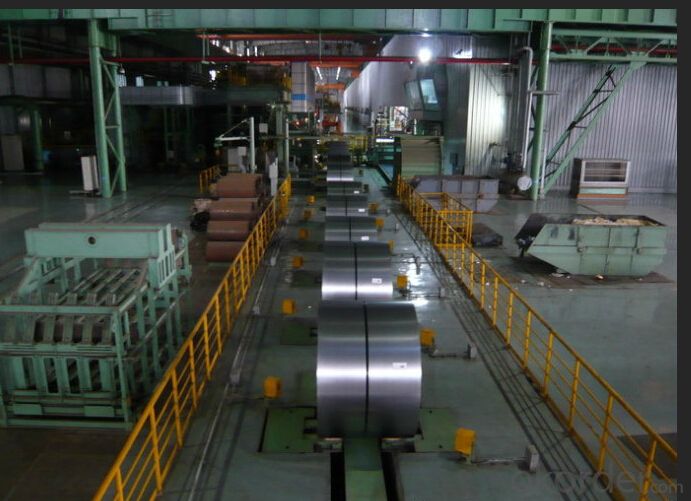
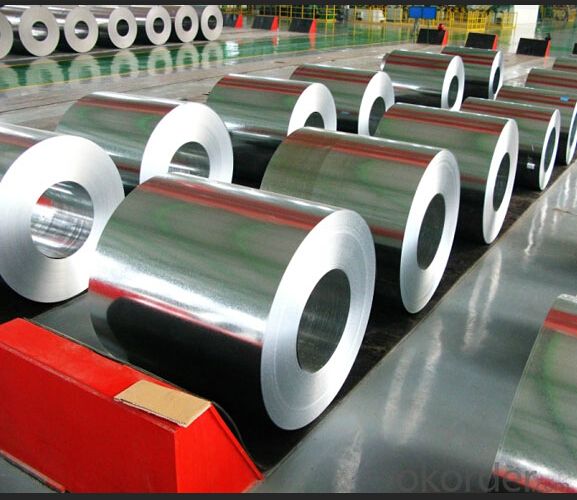
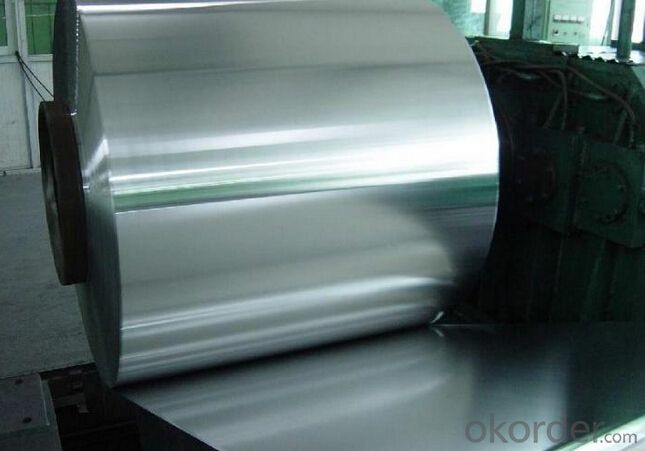
5.Hot-dip Aluzinc Steel Specification
AVAILABLE SPECIFICATION | HOT-DIP ALUZINC STEEL COILS |
THICKNESS | 0.16mm-3.5mm |
WIDTH | 1250mm MAX |
COATING MASS | 30 g/ m2-185 g/ m2 |
SPANGLE | Regular Spangle, Minimized Spangle, Zero Spangle |
SURFACE TREATMENT | Chromated / non-chromated, Oiled / non-oiled, Anti Finger Print |
COIL INNER DIAMETER | 508mm or 610mm |
HOT-DIP ALUZINC STEEL COILS | |||
COMMERCIAL QUALITY | ASTM A792M-06a | EN10327-2004 | JIS G 3321:2010 |
STRUCTURE STEEL | SS GRADE 230 SS GRADE 255 SS GRADE 275 SS GRADE 340 SS GRADE 550 | S220GD+AZ S250GD+AZ S280GD+AZ S320GD+AZ S350GD+AZ S550GD+AZ | SGLC400 SGLC440 SGLC490 SGLC570 |
6.FAQ of Hot-dip Aluzinc Steel
We have organized several common questions for our clients,may help you sincerely:
1) What advantages does your company have?
Cement : Annual capacity of 400 million tons, No. 1 in the world
Fiberglass: Annual capacity of 1 million tons fiberglass, No. 1 in the world.
Composite Materials — Carbon Fiber: Annual capacity of 10,000 tons PAN precursor and 4,000 tons carbon fiber, No. 1 in China
Composite Materials — Rotor Blade: Annual production capacity of 15,000 pieces, No.1 in China, Top3 worldwide
Glass: CNBM owns about 20 modern float glass product`ion lines, With annual capacity of 10 million square meters glass.
Light Weight Building Materials: Annual capacity of 1.65 billion square meters of gypsum board, No. 1 in the world.
Commercial concrete: Annual capacity of 0.35 billion cubic meters, No. 1 in the world.
Refractory Material: Annual capacity of 40,000 tons casting refractory, No.1 in the world.
2) What advantages do your products have?
Firstly, our base material is of high quality, Their performance is in smooth and flat surface,no edge wave ,good flexibility.
Secondly, high quality zinc ingoats, 97.5% zinc,1.5% silicon,1% others, the same zinc coating measured by metal coating thickness or by zinc weight
Thirdly, high precision: Tolerance strictly according to ASTM or JISG standard even more rigid.
We have full stes of testing equipment(for t best, cupule,chromatism,salt spray resistance, etc) and professional engineers.
3) Could you let me approach about your company in Dubai?
Located at Jebel Ali Free Zone in Dubai, CNBM Dubai Logistics Complex is adjacent to -Jebel Ali sea port-the largest port in UAE and Al Maktoum Airport-the largest airport in the world, which covers an area of 50,000 square meters, including an fully enclosed warehouse by 10,000 square meters, an open yard by 25000 square meters, and 13 standard unloading platform. CNBM Dubai Logistics Complex formally put into operation on August 1, 2013. Dubai Logistics Complex will commit itself to build the most professional and most influential building materials distribution center of China’s building materials industry in the UAE and throughout the Middle East and Africa.
- Q:How are steel strips used in the production of tools and equipment?
- Steel strips are commonly used in the production of tools and equipment as they provide strength, durability, and versatility. These strips are often cut, shaped, and formed into various components, such as blades, cutting edges, springs, and handles. The high tensile strength of steel allows these tools and equipment to withstand rigorous use, while its corrosion resistance ensures longevity. Additionally, steel strips can be heat-treated to achieve specific hardness levels, making them ideal for a wide range of applications in industries such as construction, manufacturing, and engineering.
- Q:How do steel strips perform in terms of wear resistance?
- Steel strips typically exhibit excellent wear resistance due to their hardness and durability. They are able to withstand friction, abrasion, and wear caused by contact with other surfaces, making them suitable for a wide range of applications where wear resistance is crucial, such as in automotive components, machinery, cutting tools, and industrial equipment.
- Q:Can steel strips be used in the manufacturing of appliances?
- Yes, steel strips can be used in the manufacturing of appliances. Steel strips are commonly used in various parts of appliances such as frames, panels, and internal components due to their strength, durability, and ability to withstand high temperatures.
- Q:How are steel strips used in the production of metal enclosures?
- Due to their versatility and strength, steel strips are crucial in the manufacturing of metal enclosures. Typically made from high-quality steel alloys like stainless or galvanized steel, these strips offer excellent durability and corrosion resistance. In the manufacturing process, the steel strips are initially cut into specific lengths and widths based on the desired dimensions of the metal enclosure. Various techniques, such as bending, folding, or welding, are then used to shape and form the strips to the required configuration. The steel strips serve as the primary structural element of the metal enclosure, providing stability and rigidity to the overall structure. They are commonly used to construct the frame or skeleton of the enclosure, offering support to other components and ensuring that the enclosure maintains its shape and integrity. Additionally, the steel strips are used to create panels or walls for the enclosure. These panels are typically attached to the frame using welding or fastening methods, resulting in a solid and secure structure. Depending on the specific requirements of the enclosure, the steel strips may be perforated or have holes to allow for ventilation or cable management. Furthermore, the steel strips can be coated or painted to enhance their appearance and provide added protection against rust or other environmental factors. This feature makes the metal enclosures suitable for various industries like electronics, telecommunications, and automotive, where both aesthetics and durability are crucial. In conclusion, steel strips play a vital role in the production of metal enclosures by offering strength, stability, and versatility. They are an essential component in the manufacturing process, ensuring that the final product meets the necessary standards and provides a reliable and durable solution for housing different equipment and components.
- Q:What are the common yield strengths for steel strips?
- The common yield strengths for steel strips can vary depending on the specific grade and thickness, but typically range from 30,000 to 100,000 pounds per square inch (psi).
- Q:How are steel strips used in the production of electronic components?
- Steel strips have a wide range of applications in the production of electronic components. A key use is in the manufacturing of printed circuit boards (PCBs), where they serve as the base material. This provides a strong foundation for mounting electronic components. To make the steel strips suitable for PCBs, they are typically coated with a layer of copper. This can be done through electroplating or by laminating a thin copper sheet onto the surface. The copper layer acts as a pathway for electrical signals to flow through the PCB. It also offers excellent thermal conductivity and electrical properties, ensuring efficient signal transmission and preventing interference. In addition to PCBs, steel strips are also important in the production of electronic connectors and terminals. These connectors are crucial for establishing electrical connections between different components or devices. The high strength and durability of steel strips make them an ideal choice for the base material of these connectors, ensuring reliable and secure connections. Furthermore, steel strips are used for shielding purposes in electronic component production. They can be used to create enclosures or shields that protect sensitive electronic circuits from electromagnetic interference (EMI) or radio frequency interference (RFI). Steel strips with specific magnetic properties effectively block external electromagnetic radiation, ensuring the proper functioning of electronic components. Overall, steel strips are essential in the production of electronic components. They provide a strong base material for PCBs, act as conductive pathways, form connectors and terminals, and offer shielding properties. Their versatility and reliability make them indispensable in the electronics manufacturing industry.
- Q:Can steel strips be used in oil and gas applications?
- Yes, steel strips can be used in oil and gas applications. They are commonly utilized for various purposes such as manufacturing pipes, equipment, and structures in the oil and gas industry. Steel strips possess excellent strength, durability, and corrosion resistance, making them suitable for withstanding harsh environments and high-pressure conditions found in oil and gas operations.
- Q:How are steel strips tested for corrosion resistance?
- To ensure the durability and longevity of steel strips, various methods are utilized to test their corrosion resistance. One commonly employed technique is the ASTM B117 test, also known as the salt spray test. During this test, the steel strips are exposed to a highly corrosive salt spray environment for a specified duration, replicating real-world corrosion effects. Another method utilized for corrosion resistance testing is the electrochemical test. This involves immersing the steel strips in a corrosive solution and applying a small electrical current. By measuring the corrosion potential and current flow, valuable insights into the material's resistance to corrosion can be obtained. In addition, specialized equipment is employed in some laboratories to conduct accelerated corrosion tests. These tests subject the steel strips to extreme conditions, such as high humidity or temperature fluctuations, to expedite the corrosion process. This enables researchers to assess the material's performance within a shorter timeframe. Furthermore, visual inspection and microscopic examination are conducted to evaluate the extent of corrosion and identify any signs of corrosion initiation on the steel strips. This information aids in pinpointing areas of weakness and guiding improvements in the material's composition or production processes. Overall, a comprehensive evaluation of the corrosion resistance of steel strips involves a combination of salt spray testing, electrochemical testing, accelerated corrosion tests, and visual examination. By conducting these tests, manufacturers can ensure that their steel strips adhere to the required standards and possess the capability to withstand corrosive environments. Consequently, the long-term reliability and performance of the steel strips are guaranteed.
- Q:Are steel strips suitable for making automotive exhaust systems?
- Automotive exhaust systems can be made using steel strips, which are highly suitable for this purpose. Steel is extensively utilized in the automotive industry owing to its remarkable properties, such as its strength, durability, and exceptional heat resistance. When it comes to shaping and forming, steel strips can effortlessly be adjusted to meet the necessary dimensions and endure the demanding conditions associated with exhaust systems, including high temperatures, vibrations, and corrosion. Moreover, these strips can be coated or treated to enhance their resistance to corrosion and prolong their lifespan, particularly in harsh environments. In conclusion, steel strips offer an economical and dependable solution for the production of automotive exhaust systems.
- Q:How are steel strips tested for elongation?
- Steel strips are typically tested for elongation using a tensile test, where a sample is subjected to a gradual and controlled force until it breaks. During the test, the elongation of the strip is measured and calculated as a percentage increase in length from the original length. This provides valuable information about the ductility and stretchability of the steel strip, helping to determine its suitability for specific applications.
1. Manufacturer Overview |
|
|---|---|
| Location | |
| Year Established | |
| Annual Output Value | |
| Main Markets | |
| Company Certifications | |
2. Manufacturer Certificates |
|
|---|---|
| a) Certification Name | |
| Range | |
| Reference | |
| Validity Period | |
3. Manufacturer Capability |
|
|---|---|
| a)Trade Capacity | |
| Nearest Port | |
| Export Percentage | |
| No.of Employees in Trade Department | |
| Language Spoken: | |
| b)Factory Information | |
| Factory Size: | |
| No. of Production Lines | |
| Contract Manufacturing | |
| Product Price Range | |
Send your message to us
Hot-dip Aluzinc Steel Coil From Chinese Shandong
- Loading Port:
- Tianjin
- Payment Terms:
- TT or LC
- Min Order Qty:
- 35 m.t.
- Supply Capability:
- 22222 m.t./month
OKorder Service Pledge
OKorder Financial Service
Similar products
New products
Hot products
Related keywords




